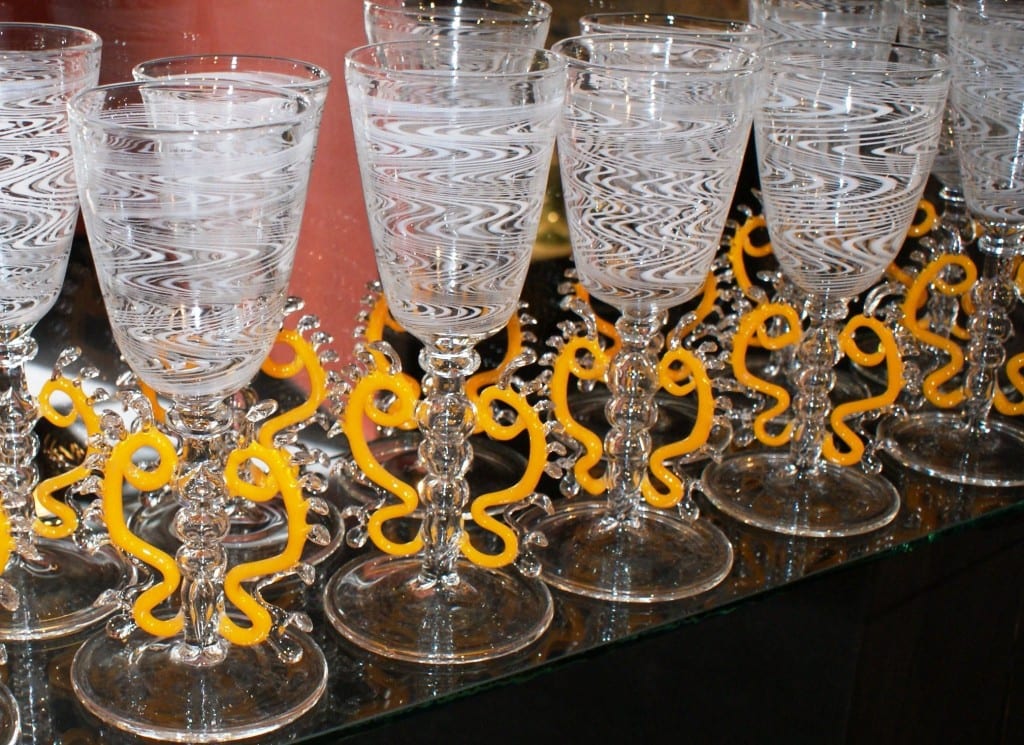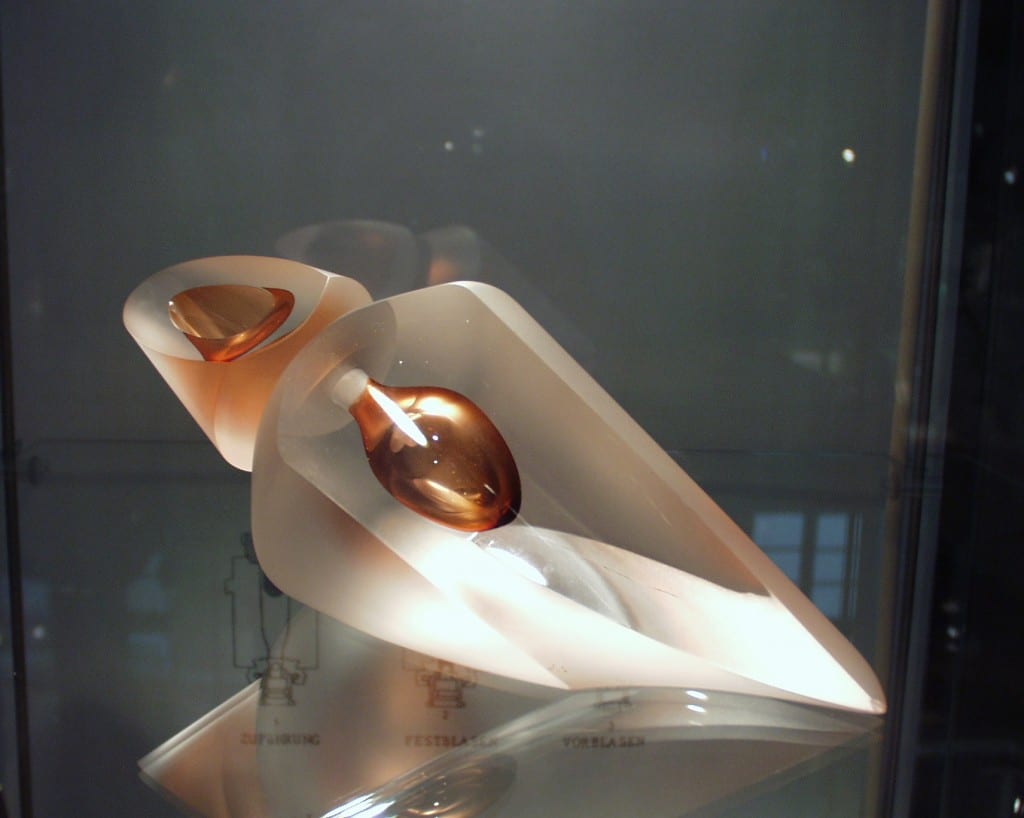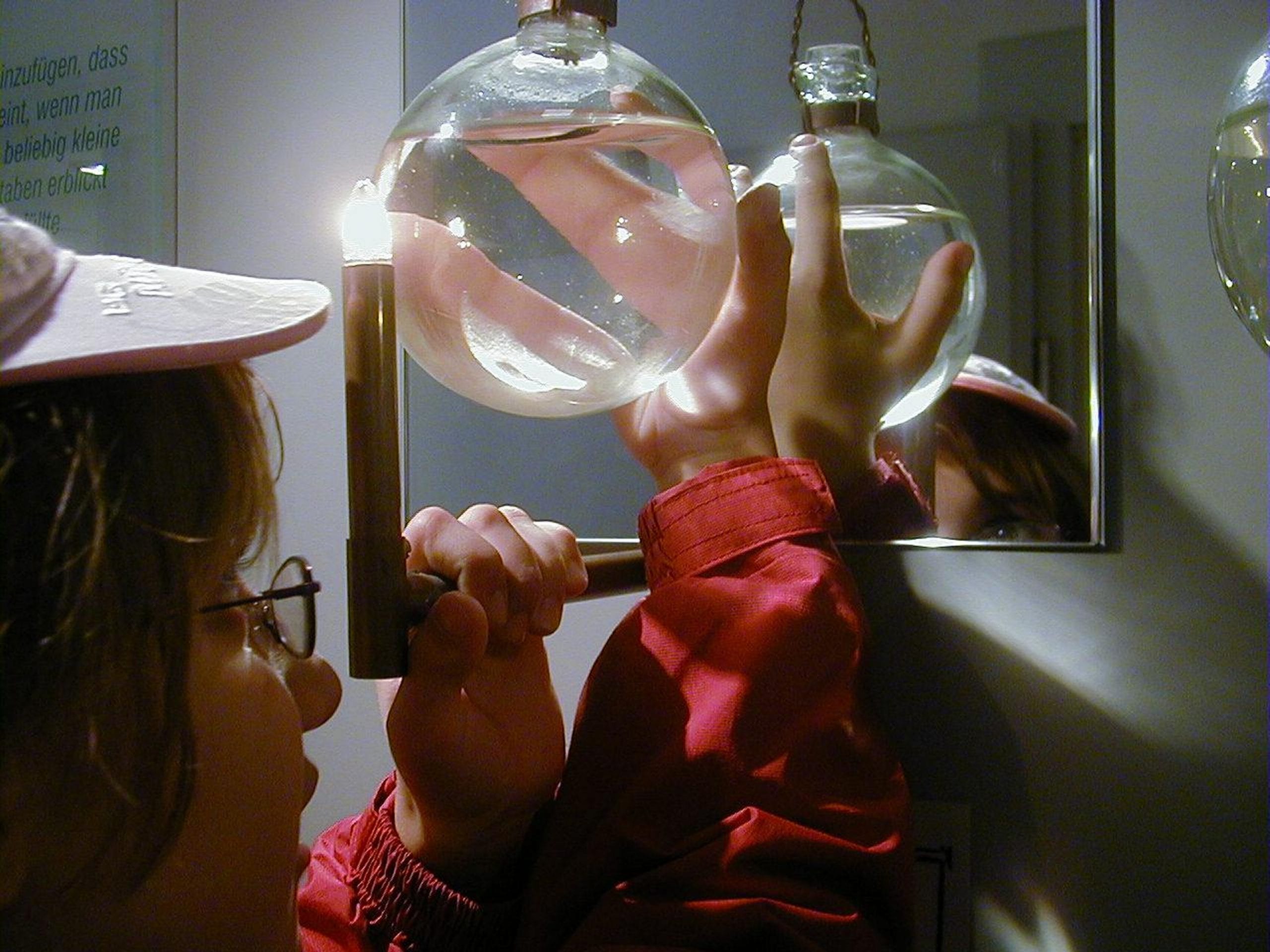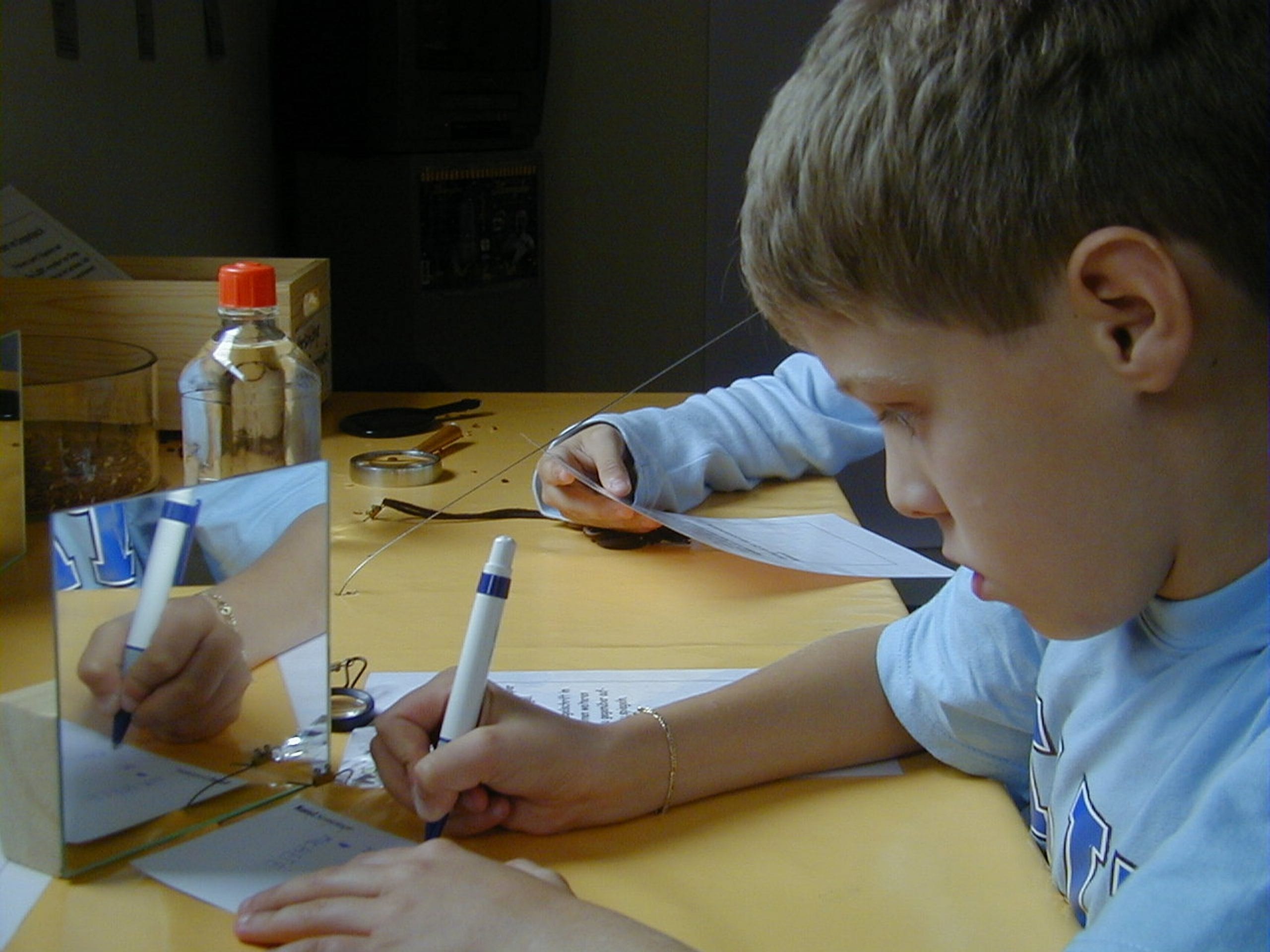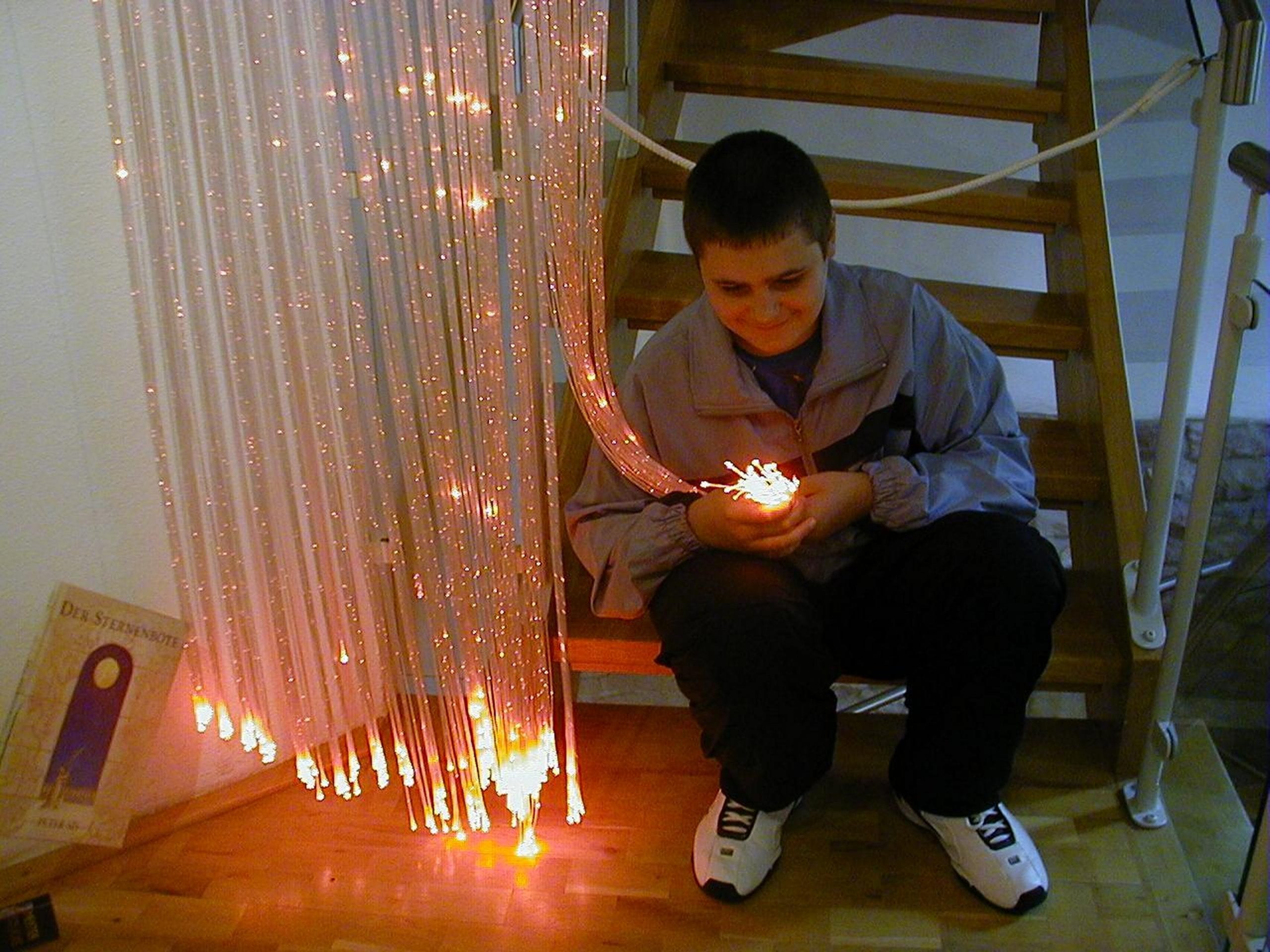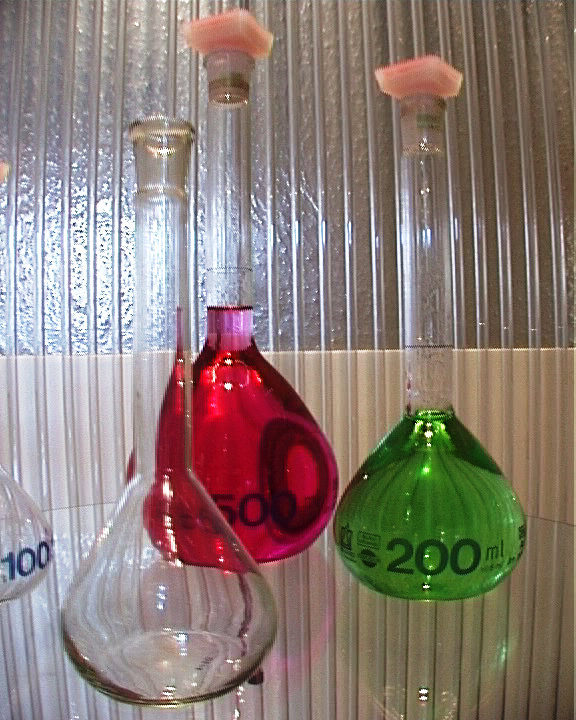Our museum at a glance

Big House
Museum workshop
The museum glassblower demonstrates how glass is processed in front of the 1200 °C flame. He demonstrates to visitors how a glass ball is blown from a glass tube, how the foot of a drinking glass is spun open or how a glass animal is hot-assembled. On request, he makes replicas of historical glasses, blows each visitor their own individual glass for home and invites visitors to blow a glass ball themselves.
Museum shop
In the museum shop, visitors can purchase glass replicas, products of the Wertheim glass industry, modern glass art objects or buy glass souvenirs for home, friends or family. In doing so, they support glass craftsmanship and contribute to the continued existence of the GLASMUSEUM WERTHEIM e. V..
The A - Z Collection
On the first and first floors, the GLASMUSEUM WERTHEIM shows more than 3000 years of glass history, from the Egyptian luxury alb vessel to the Wertheim special glass industry that still exists today.
Small house
Historical Christmas tree ornament collection
The development of the Thuringian Christmas tree ornament industry - the basis of the Wertheim laboratory glassware industry
Thuringian Christmas tree decorations made of glass have been on sale since the Biedermeier period. In the first half of the 19th century, the Christmas tree was no longer only set up in squares in the cities, but was brought into the "good parlour" of the citizens.
The glass Christmas tree ornaments developed from the fruit and knick-knack figures that the Thuringian glassblowers made on the simple bellows-powered blowing lamp. The figures were then colourfully painted with gelatine dyes and even then exported as far as Nippon, in German Japan.
Three developments enabled a rapid increase in the production of glass Christmas tree decorations: the introduction of the gasworks in Lauscha in 1867 and the production of aniline dyes in the first tar factory founded a year earlier by the English chemist William Henry Perkin near London. Added to this was the non-toxic internal silvering developed by the chemist Justus von Liebig, which contributed to a gigantic variety of shapes and colours. Figures such as Pinocchio, who grows a long nose when he lies, or Wilhelm Busch's Max and Moritz have enjoyed increasing popularity in recent years. During the annual Christmas exhibition at the Wertheim Glass Museum from 1 Advent to 6 January, they decorate the four-metre-high "Thuringian Figurine Tree".
Big House
Glass from A to Z
The more than 3000-year-old history of glass as a material in just one exhibition - that's something you can only find here in the Wertheim Glass Museum. You can take a look at each letter of the exhibition online.
Treasures made of glass
50 precious glass objects exemplify the development of glass and advances in glass technology from antiquity to the present day.
Alois Wienand Collection
You are standing in the middle of a sample collection with 75 replicas of historical glasses, which the former glassmaker from the Wertheim glassworks has produced using the techniques he researched and experimentally (re)developed from the Middle Ages and early modern times, based on originals, reconstruction drawings and book originals. Celtic glass arm rings are a special feature.
Small house
Glass Bead Cabinet
The "Glass Bead Cabinet" provides an insight into the development of the first glass objects and their role in mythology, religion, as trade or fashion objects. The scientifically valuable and well-known glass bead collection of the Mainz scientist Thea Elisabeth Hävernick and the glass bead collection of the Glass Museum illustrate the great craftsmanship with which even the early advanced civilisations created true masterpieces of glass.
Scientific Glass Cabinet
The "Scientific Glass Cabinet shows the development of glass as an instrument for research and science and as an indispensable material for industry. The didactic presentation of the exhibits (including barometers, cobbler's balls, light bulbs, lenses) is aimed primarily at young people in order to promote their interest in science and technology.
Paperweights
The "Paperweight Cabinet with more than 600 glass paperweights from the collection of Peter von Brackels from Bad Honnef shows paperweights from the period of late Biedermeier, Historicism, Art Nouveau, Art Deco up to modern times, as they were produced in Germany, Bohemia, Silesia, Belgium, Italy, France and other European countries. On display are very rare so-called "classical" paperweights from the period from 1840/42 to around 1860/70 ("millefiori", sulphide, lamp glass paperweights"), the "early post-classical" period from around 1870/80 to around 1905/10 ("folk art" or "work break" paperweights", the "other post-classical" period from around 1880/90 to 1945 as well as collectors' items from today.
Big House
Glass from A to Z
Wertheim experienced an enormous economic upswing in the 1950s. The reason for this was the specialization in the glass industry, which still exists today, with the production and further processing of technical laboratory glass. The founding of the "Glaswerk Wertheim" in 1949 was an important milestone. Five glass entrepreneurs from Thuringia thus secured their source of raw materials: Rudolf Brand, Dr. Fritz Friedrichs, Josef Friedrichs, Dr. Hans Löber and Carl Zitzmann. Today, Wertheim is the second largest center of the German laboratory glass industry after Mainz and before Ilmenau in Thuringia. An impressive collection of how glass is used in industry is given by the exhibition "Glass from A to Z" on the second floor.
Playstation course: For children
Play station course with 35 glass play stations as an interactive presentation based on the model of the Federal Association of German Children's and Youth Museums, in which not only children and young people can 'grasp' the many facets of glass as a material in a playful way.
- Opening hours:
Monday to Friday: 2:00 pm to 5:00 pm - Saturday + Sunday + public holidays: 11:00 a.m. to 5:00 p.m.Glass beakers present: 2:00 p.m. to 5:00 p.m.
You can find our current museum opening hours on our homepage.
- Current exhibition from 23.3.-31.08.24: Glass Paths - Studio Glass meets Fusing Glass (Susanne Precht & Elke Pfaffmann)
- Christmas offers for groups
- Christmas offers for nurseries and schools
Here you will find all the information about our loanable hands-on exhibition "Energy Trail - All Energy Comes from the Sun?" with 30 interactive stations on the topic of energy.

